ST. GEORGE — The monsoons of the recent weeks have been bringing about creepy and crawly things from under the desert sands. While most have seen scorpions and spiders, there is one small creepy-crawly that has people texting and jumping on social media asking what it is.
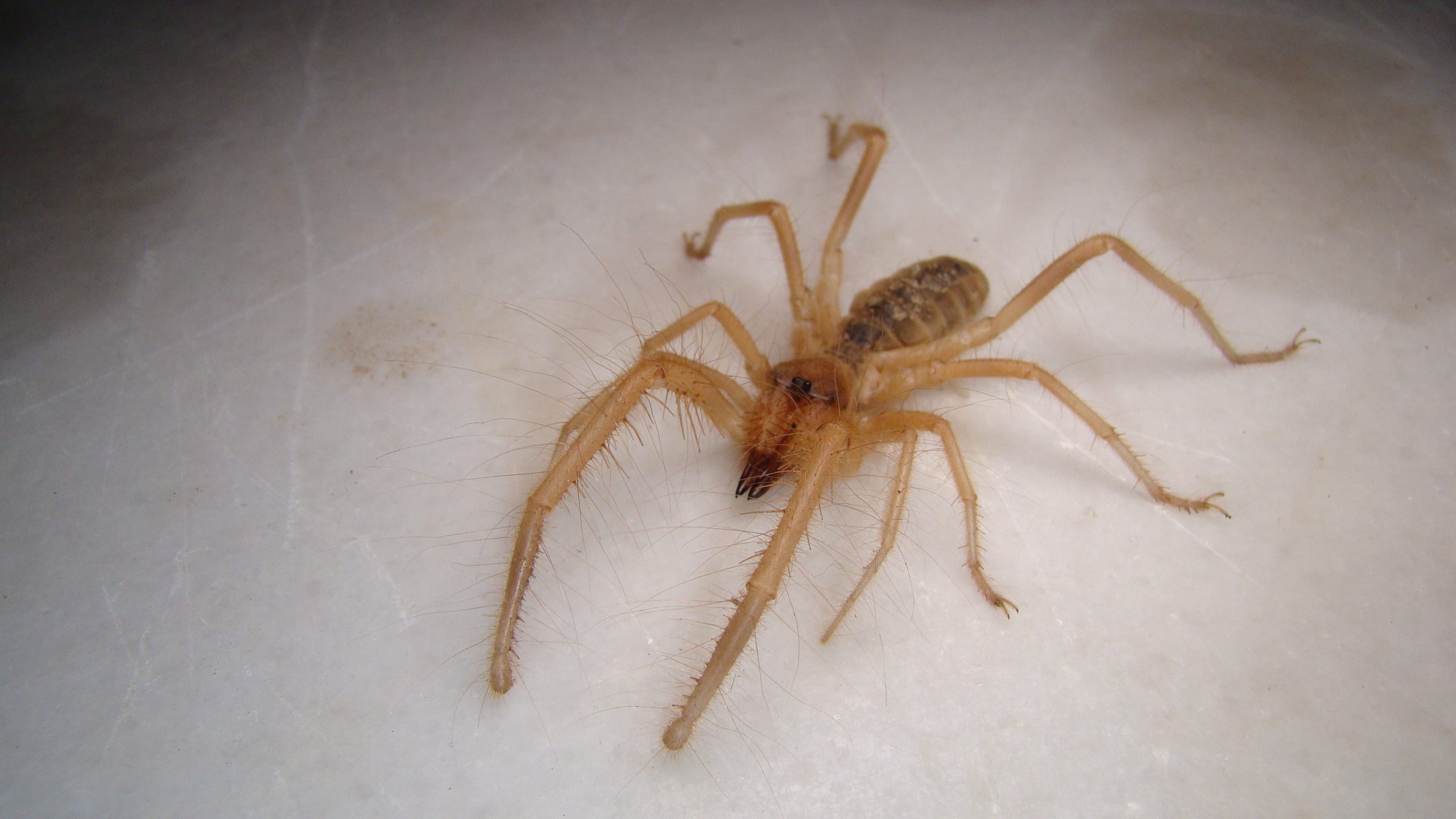
Some argue it’s a type of spider, while others argue it’s a type of scorpion. Both of those arguments are wrong. Looking like a cross between a spider and a scorpion, the sun spider is an arachnid but fits into neither of the families, the spider or scorpion.
If you think this “alien-looking bug” is actually a vinegaroon, you would be wrong. The vinegaroon is an actual creature, another arachnid but totally different and resides in a totally different environment.
Yet, there is even another guess on a name that is incorrect for the creature, a sowbug killer spider. Once again, those who would guess this would be wrong too.
So what is the difference between these three arachnids, and how can they be identified properly?
Misidentification of the sun spider as a vinegaroon
Some people in Southern Utah, Southern Nevada, and Northern Arizona who have come across a sun spider immediately misidentify it as a vinegaroon.
Zach Schumm of the Utah State University Extension and Biology Department. is considered an arachnid expert for Utah. He believes there is one main reason the misidentification happens.
“To an entomologist, they look almost nothing alike. To the layperson, they have a similar shape which could be the sole reason for the misidentification,” Schumm said. “Shape is often all that is necessary for the layperson to identify something as a particular type of organism.”
Schumm explained an entomologist looks at all the physical traits of the organism before identification is decided upon. These physical traits include (but are not limited to) legs, wings, size, color, and sometimes even counting hairs to differentiate between different species.
Basic features of all 3 species
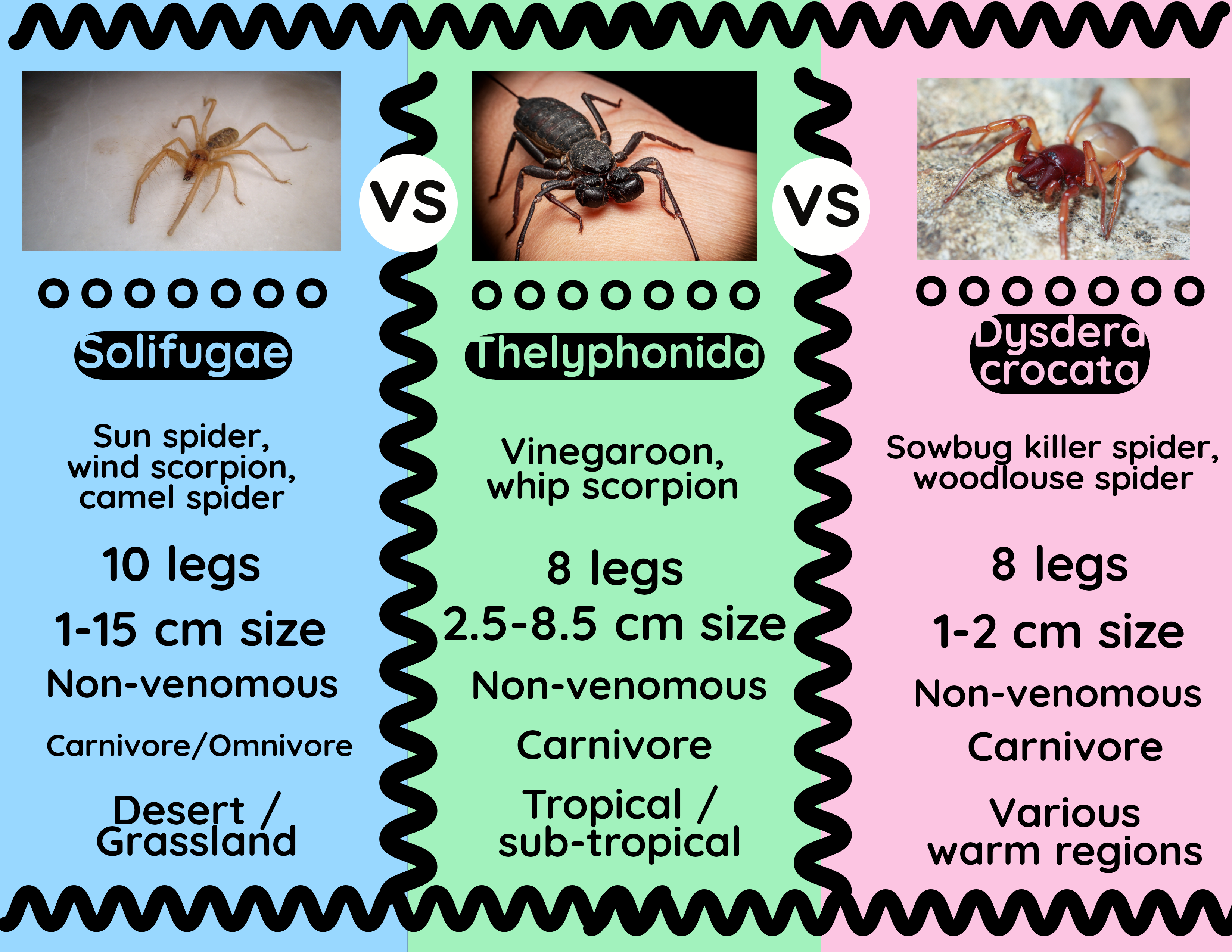
“Sun spiders have ten legs, so they cannot be placed in the same order as spiders,” said Schumm, explaining why sun spiders are actually not spiders.
He also explained the sun spider is found prevalent on just about every continent in the world and ranges in size. He reported North American species can be up to about an inch maximum in size. However, other regions have found sun spiders up to around 6 inches in size, these include the Egyptian camel spiders in the Middle East area.
Vinegaroons, on the other hand, have eight legs but only use six of them for movement. The front two are legs, which kind of services like antennas. The antenniform legs detect chemicals, moisture, vibrations, prey, mates, and more.
Vinegaroons can get up to more than 3 inches in length and have a tail-like appendage that looks similar to a stinger. That appendage is their main defensive mechanism. It sprays an acetic acid out of the base of the appendage, which is of about 85% concentration and reaches up to a foot in distance. Acetic acid is the base of vinegar, hence the name vinegaroon.
The sun spider does not have a tail. It does use its front two legs, pedipalps similar to the vinegaroon, to detect vibrations, moisture, prey, and more. Unlike the vinegaroon, the sun spider does not emit any acetic acid.
Some very visually seen difference between the two is the colors. The sun spider is found in colors ranging from light brown to yellow in color, with some grey to bronze markings, while the vinegaroon is more black and gray colors. Another visual difference is their eyes. The vinegaroon has eight eyes like most spiders. However, the sun spider only has two eyes.
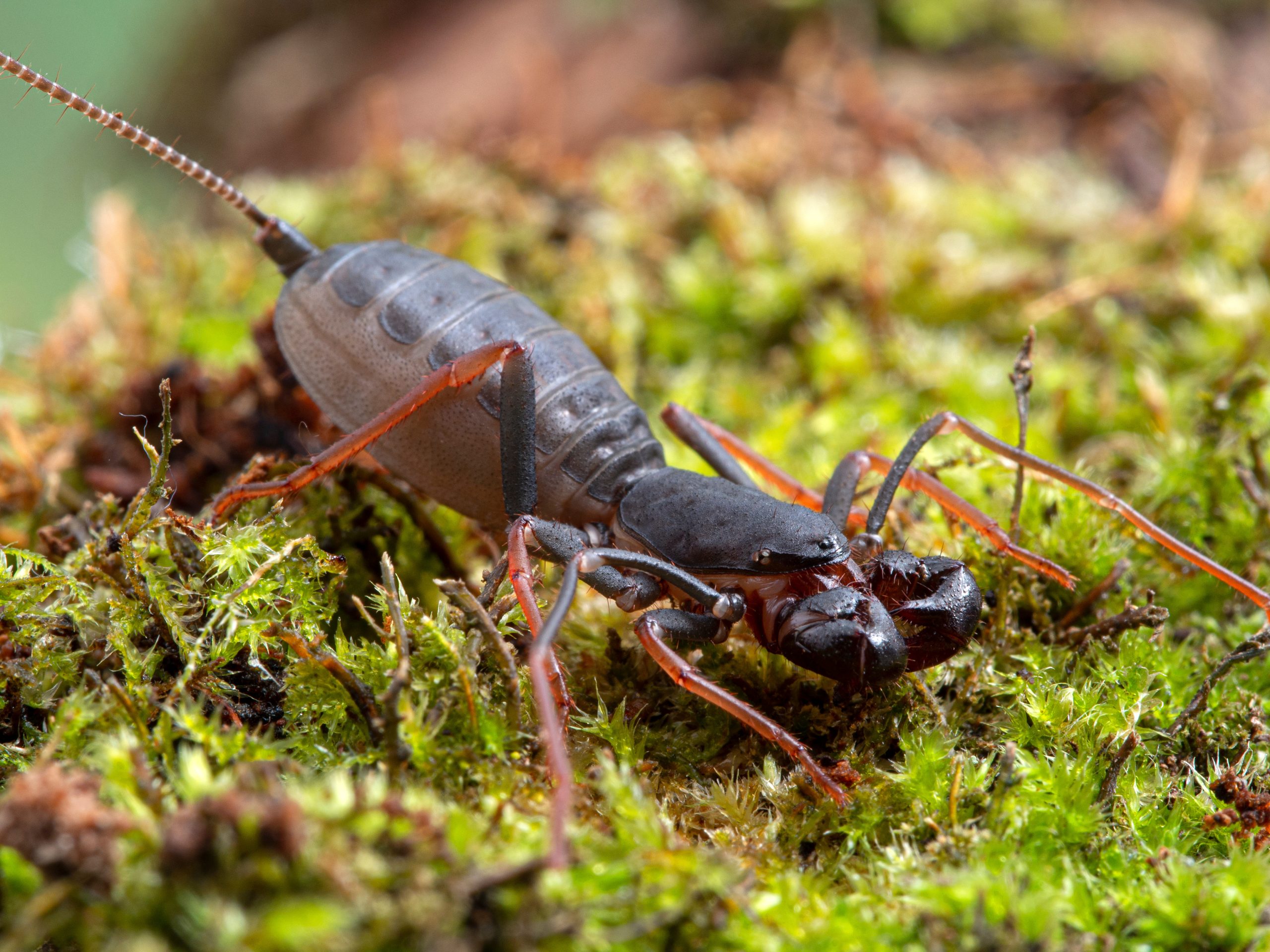
The sowbug killer spider is also an authentic spider and is best known as a type of woodlouse spider. They have a similar shape and look like a sun spider, but not elongated in shape and different coloring of the brown body with reddish head and legs. They also have eight eyes, Most spiders have eight eyes but some spiders can have up to 12.
One of the biggest differences in physical traits is in the mouth areas of the three species.
The sun spider has two chelicerae (similar to three-segment pincers), which serve more like a jaw and help grind food down. The vinegaroon has two pedipalps which are clawed in shape and serve as pincers that help eat. Sowbug killer spiders have actual fangs which inject poison into their prey. This is not harmful to humans.
Environments and Seasons
The sun spider is known to be local in desert and arid regions, such as Southern Utah, Southern Nevada, Arizona, Texas, New Mexico, and Southern California. It is also found throughout the world on every single continent except for Antarctica. They can also be found in dry grassland regions. There are about 1,000 species of solifugae.
The vinegaroon, on the other hand, is found in tropical and subtropical areas, such as the Caribbean, Puerto Rico, and Costa Rica. Most areas with vinegaroons are within Asia, Euro-Asia, northern South America, Central America, and the Southern United States. The giant vinegaroon is found in Arizona, Texas, and Florida, and a few times in Southern California within the Mohave desert region. There are about 1,200 species worldwide.
The sowbug killer spider is best known to be located from New England to Georgia, the Midwest, and the Pacific Northwest. It is also commonly encountered in England, northern Europe, and Australia. It gets its name from its favorite food, the sowbug (a.k.a. roly-poly bug).
All 3 species are more prevalent during spring and summer, especially after storms.

Dangers of the Bite
Schumm explained a sun spider’s bite is far from deadly.
“They can give you a painful bite, but they are not considered a significant health concern to humans, contrary to posts you’ll see on social medial,” he said. “Just wash a bite wound with soap and water, and you should be good to go.”
Vinegaroons are rather docile and have been known to be held by people, including children. Their bite is rather painful, and the only concern is an infection due to bacteria. Like the sun spider, washing with water and soap should be plenty to treat the bite.
The sowbug killer spider’s bite is nonvenomous to humans and is unlikely to bite. However, if bitten, some people will experience swelling and possibly some pain. If a bad reaction to the bite is experienced, seek medical attention with an anti-inflammation medication and antihistamine like Benadryl.
Urban Myths
For the sun spider, a common belief is when bit by one, the inflicted person would taste an acetic or “vinegary” taste inside their mouth. This is incorrect.
The vinegaroon, not the sun spider, sprays acetic acid from its whip-like tail named caudal appendage, but does not give an acetic acid taste in the mouth if the person is bitten by the arachnid.
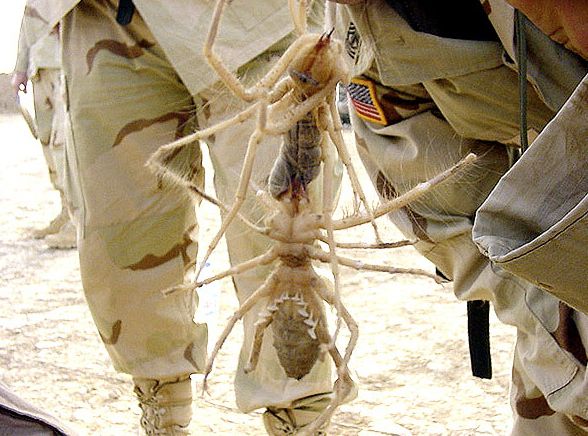
The most common urban legend of the sun spider or camel spider is the size of the creature. People have claimed to have found sun spiders up to 6 ft. in size on the internet with pictures provided. However, the pictures of these creatures, often with military personnel in areas of Afghanistan or the Middle East, are pictured at least a couple of feet in size.
The images are often photoshopped, or the perspective of the camera makes the solifugae appear to be more mass and weight in size. A certain angle of the camera gives them the appearance to be a couple of feet in length when they are actually about 5-6 inches in size.
It’s also widely believed that sun spiders will hunt you down and can jump extremely high, as high as 7 ft. in some accounts. This is another urban myth. The sun spider does not jump as they rely on its front two legs to find prey. They do not hunt their prey down, either.
Another belief is that sun spiders are faster than humans and chase humans. Once again, another urban myth as the sun spider has been clocked in under 10 mph, and they chase humans for their shade. They are nocturnal and only chase humans to get into the shadow of the human they are running after. They are not aggressive.
The last urban myth is they scream when they attack. Again, this is false. They may hiss but usually do not make a sound.
Pest control
When asked about control of these arachnids from entering your house, Schumm explained it is the same as other pests.
“As with all creatures that want to be prevented in the home, seal up the home as best as you can with new door sweeps and thresholds, seal foundation cracks, replace window and screen door screens, and re-caulk where necessary.”
Your friendly arachnid
Far from being aggressive and given a bad reputation by urban myths, the sun spider and vinegaroon are not a threat to humans. They are known to be rather docile, only biting when threatened by a potential predator.
“I find sun spiders to be incredibly fascinating. I have found some in Costa Rica and picked them up barehanded without any issue. So give these guys some love. They are nothing to be afraid of,” Schumm said.
Photo Gallery

Comparative Chart of Sun Spider, Vinegaroon, and Sowbug Killer Spider, Sept. 3, 2022 | Chart created by Nick Yamashita with approval from Utah State University, St. George News

File: Side view of a juvenile Malaysian vinegaroon. Vinegaroons, also called whip scorpions, can defend themselves by producing an offensive liquid that smells like vinegar, location unspecified, Aug. 27, 2022 | Photo courtesy of Adobe Stock, St. George News

File: Close-up view of the chelicerae (similar to jaws) of the Sun Spider (solifugae), location unspecified, Aug. 27, 2022 | Photo courtesy of Adobe Stock, St. George News

File: Close-up view of the pedipalps of the Sun Spider (solifugae), location unspecified, Aug. 27, 2022 | Photo courtesy of Adobe Stock, St. George News
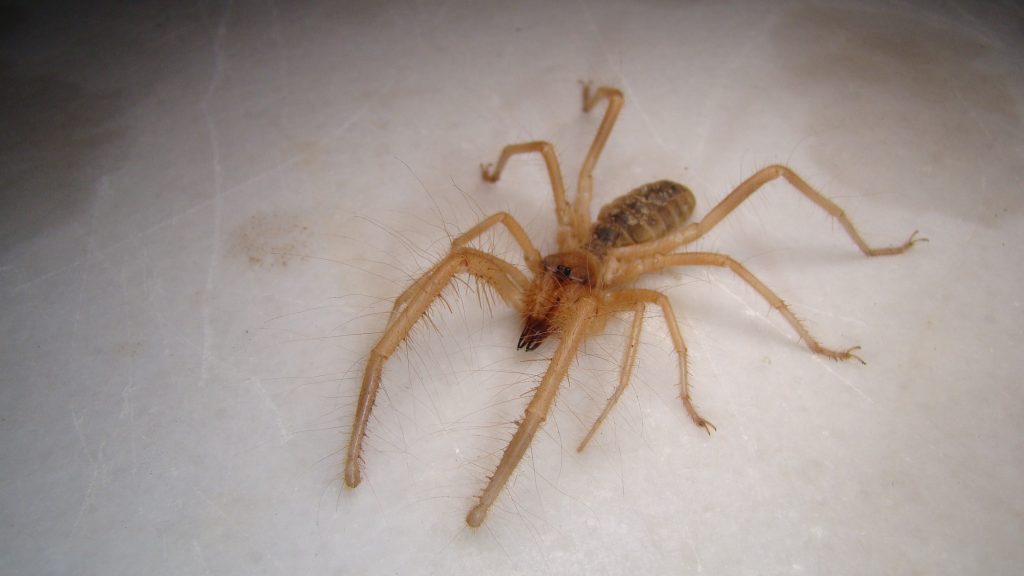
File: photo of sun spider (solifugae), are often mistaken as vinegaroons, location unspecified, Aug. 27, 2022 | Photo courtesy of Adobe Stock, St. George News

File: photo of sun sowbug killer spider, looks similar to a sun spider at times, location unspecified, Aug. 27, 2022 | Photo courtesy of Adobe Stock, St. George News

File: photo of camel spiders in Afghanistan captured by military which caused urban myths of their size. This camera perspective gives the illusion the camel spider is bigger than it really is on social media sites, Date unspecified | Photo courtesy of Pinterest, St. George News

File: Vinegaroons, also called whip scorpions, can defend themselves by producing an offensive liquid that smells like vinegar, location unspecified, Date unspecified | Photo courtesy of Adobe Stock, St. George News

File: Vinegaroons, also called whip scorpions, can defend themselves by producing an offensive liquid that smells like vinegar, location unspecified, Date unspecified | Photo courtesy of Adobe Stock, St. George News

File: Vinegaroons, also called whip scorpions, can defend themselves by producing an offensive liquid that smells like vinegar, location unspecified, Date unspecified | Photo courtesy of Adobe Stock, St. George News

File: photo of sun spider (solifugae), are often mistaken as vinegaroons, location unspecified, Aug. 27, 2022 | Photo courtesy of Adobe Stock, St. George News

File: photo of sun spider (solifugae), eating a grasshopper, location unspecified, date unspecified | Photo courtesy of Adobe Stock, St. George News
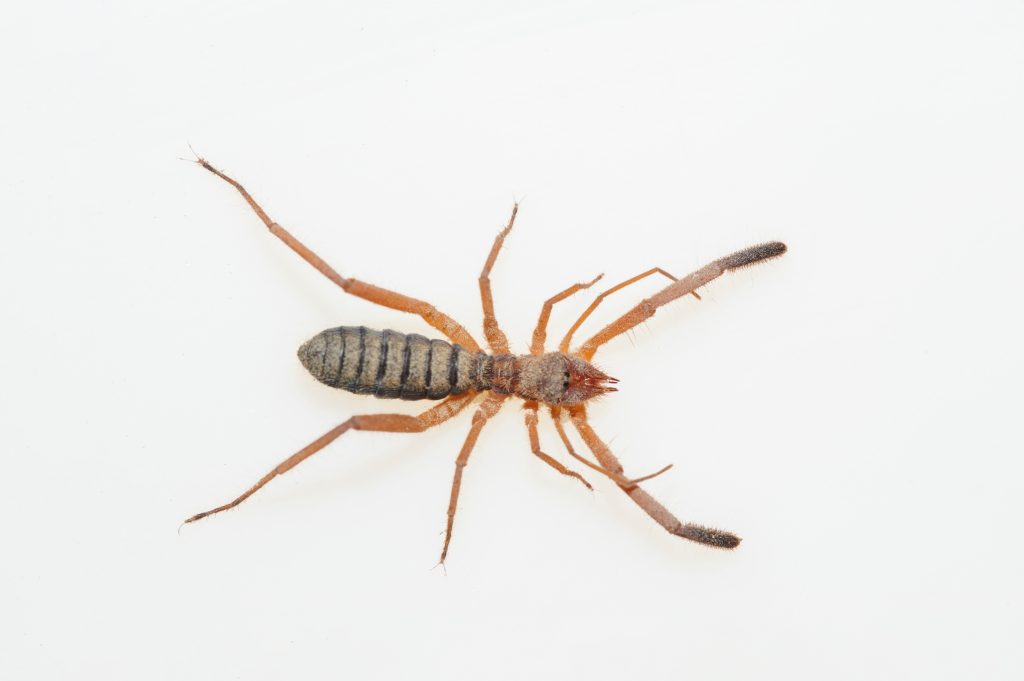
File: photo of sun spider (solifugae), are often mistaken as vinegaroons, location unspecified, Aug. 27, 2022 | Photo courtesy of Adobe Stock, St. George News

File: sun spiders are actually pretty docile and are known to be held by people, location unspecified, date unspecified | Photo courtesy of Adobe Stock, St. George News
Copyright St. George News, SaintGeorgeUtah.com LLC, 2022, all rights reserved.

